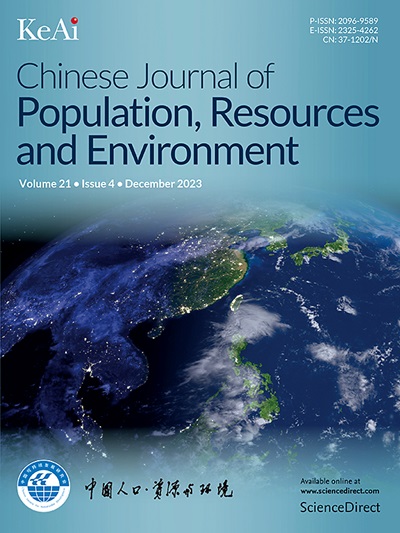Digital intelligence and synergy of pollution reduction and carbon reduction: “Dividend” or “gap”?
IF 4.8
4区 环境科学与生态学
Q2 ENVIRONMENTAL STUDIES
Chinese Journal of Population Resources and Environment
Pub Date : 2024-12-01
DOI:10.1016/j.cjpre.2024.11.003
引用次数: 0
Abstract
At the intersection of the “dual carbon” goal and the era of digital intelligence (DI), exploring the synergy between pollution and carbon reduction (SPCR) within the context of DI is important for promoting a comprehensive green transformation of economic and social development. This study, based on urban panel data from 281 prefecture-level cities in Mainland China from 2010 to 2020, developed a DI indicator system for these cities and employed a double machine learning algorithm for the first time to investigate the intrinsic mechanisms and incentivizing effects of DI on SPCR. The results showed that: ① DI significantly promotes SPCR. ② Mechanism tests demonstrated that DI can indirectly enhance SPCR by optimizing resource allocation and reinforcing government interventions. ③ Further analysis showed that the impact of DI on SPCR was more substantial in regions with lower levels of economic and environmental competition. Moreover, the SPCR driven by DI exhibited heterogeneity, characterized by stronger effects in “resource-based cities > non-resource-based cities” and “non-capital economic zones > capital economic zones”. The conclusions of this study hold significant implications for fully harnessing the synergy between digitization and intelligence to empower SPCR. In addition, the findings are valuable for the government’s integrated promotion of the “dual carbon” goal and the “digital China” strategy.
数字智能与减污减碳协同:“红利”还是“缺口”?
在“双碳”目标与数字智能(DI)时代的交叉点上,探索DI背景下污染与碳减排(SPCR)的协同效应,对于推动经济社会发展全面绿色转型具有重要意义。本研究基于2010 - 2020年中国大陆281个地级市的城市面板数据,构建了中国大陆281个地级市的DI指标体系,并首次采用双机器学习算法考察DI对SPCR的内在机制和激励效应。结果表明:①DI显著提高SPCR。②机制检验表明,残税通过优化资源配置和加强政府干预间接提高SPCR。③进一步分析表明,在经济和环境竞争水平较低的地区,DI对SPCR的影响更为显著。此外,DI驱动的SPCR表现出异质性,在“资源型城市”的影响更强;“非资源型城市”和“非首都经济区”首都经济区”。本研究的结论对于充分利用数字化和智能化之间的协同作用来增强SPCR具有重要意义。此外,研究结果对政府整合推进“双碳”目标和“数字中国”战略具有重要价值。
本文章由计算机程序翻译,如有差异,请以英文原文为准。
求助全文
约1分钟内获得全文
求助全文
来源期刊

Chinese Journal of Population Resources and Environment
ENVIRONMENTAL STUDIES-
CiteScore
4.30
自引率
1.10%
发文量
791
审稿时长
79 days
期刊介绍:
The Chinese Journal of Population, Resources and Environment (CJPRE) is a peer-reviewed international academic journal that publishes original research in the fields of economic, population, resource, and environment studies as they relate to sustainable development. The journal aims to address and evaluate theoretical frameworks, capability building initiatives, strategic goals, ethical values, empirical research, methodologies, and techniques in the field. CJPRE began publication in 1992 and is sponsored by the Chinese Society for Sustainable Development (CSSD), the Research Center for Sustainable Development of Shandong Province, the Administrative Center for China's Agenda 21 (ACCA21), and Shandong Normal University. The Chinese title of the journal was inscribed by the former Chinese leader, Mr. Deng Xiaoping. Initially focused on China's advances in sustainable development, CJPRE now also highlights global developments from both developed and developing countries.
 求助内容:
求助内容: 应助结果提醒方式:
应助结果提醒方式:


